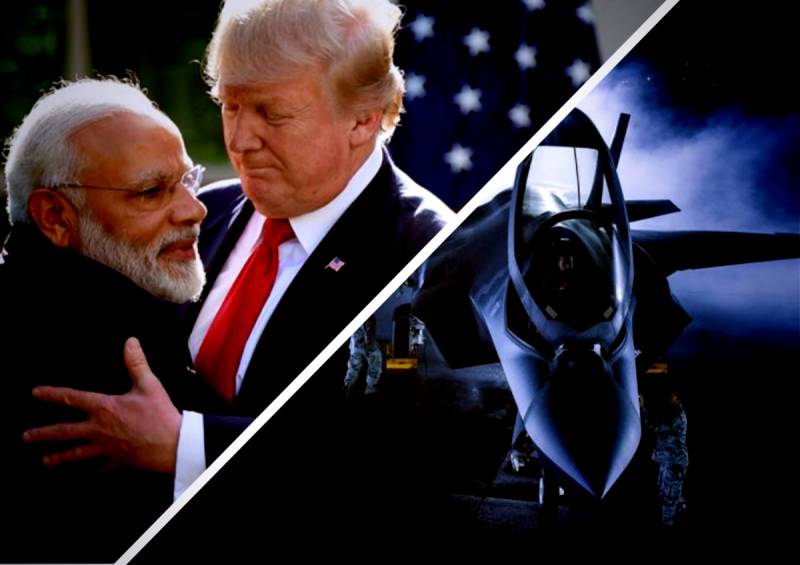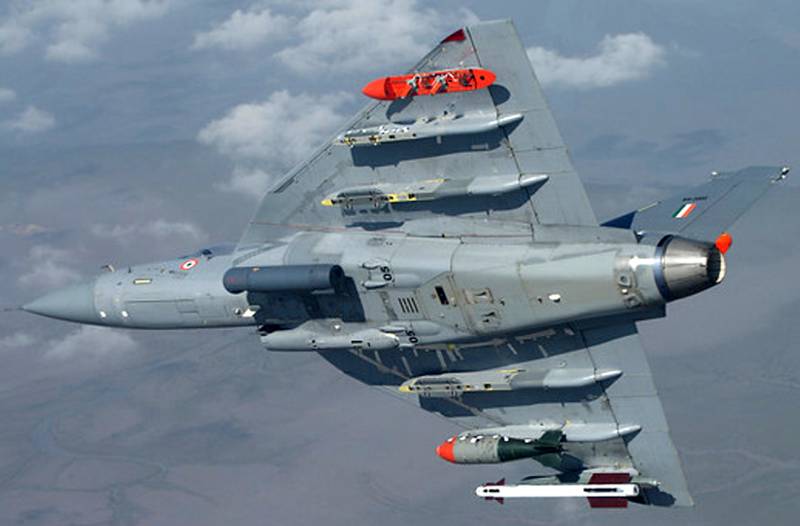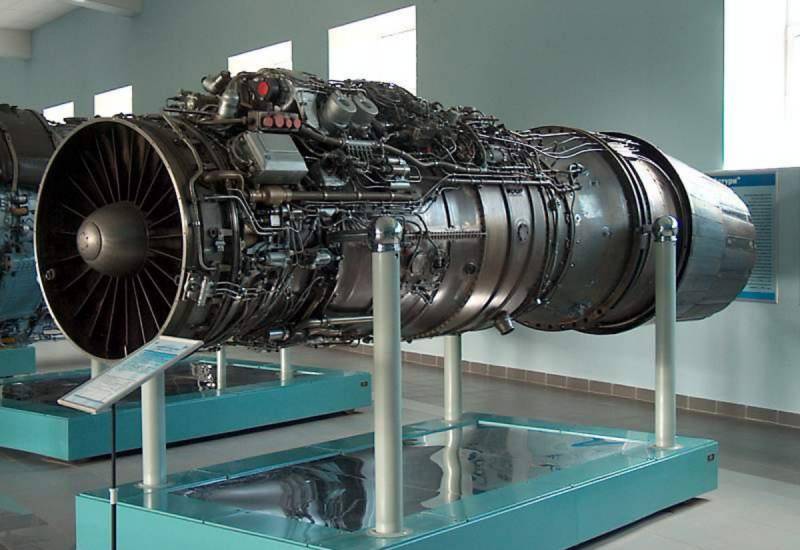Russia is a hostage of a strategic Indian-American conspiracy. Blackmail for the "drain" technology continues
For decades of comprehensive military-technical cooperation with India, we have become accustomed to the fact that this actively developing regional superpower is the primary key to Moscow’s geopolitical control over the South Asian region. Hot territorial disputes between India, on the one hand, and China and Pakistan, on the other, initiated many multi-billion purchase contracts for the Indian naval and air forces of an impressive amount of ultra-low noise diesel-electric submarines of 877EKM Paltus, large anti-submarine ships. Avenue 61-ME "Kashin-II / Rajput", frigates of Ave 1135.6 "Talwar", various versions of front-line fighters MiG-21, tactical bombers MiG-27 and modern super-maneuverable multi-purpose fighters Su-30MKI. With the help of these weapons, the Indian army partly (in some operational areas) was able to establish military parity with the PLA and the armed forces of Pakistan.
For example, right up to the beginning of the second decade of the 21st century, more than 260 multi-purpose tactical fighters Su-30MKI, supplied to HAL corporation in the form of vehicle sets from 2002, have provided the Indian Air Force with full technological and operational-tactical superiority over simplified Su-30MKK, Su -30MK2, as well as J-10A and J-11, which are in service with the Chinese Air Force. The superiority consisted in the installation of the one of the most advanced export radars from the BNNXX Bars passive HEADLIGHTS, licensedly assembled in Nasik, due to which India at one time became the first Asian country to own the most numerous fleet with PFAR radars, ahead of this even the criterion of the Air Force technology donor - the Russian Federation, which, due to the difficult economic situation, could adopt only limited series of modernized Su-011CM. The latter were equipped with a standard outdated airborne radar H27, the only advantage of which was the software and hardware unification with guided missiles air combat P-001 (RVV-AE). Also, Indian Su-77MKI received improved AL-30FP turbojet engines with an all-curving vector thrust system and an increased 31% thrust reaching 2,4 kgf. The Chinese "Dryers" at that time could only boast of a modernized onboard radar H12800VE with the introduced air-to-surface channel, which has low noise immunity and 001 target channels. The power plant Su-2MK30 was represented by two TRDDF AL-2F with a weight of 31 kgf.
The beginning of the 2 decade of the 21st century was marked by an acceleration in the development of promising Chinese AFAR-radars, which subsequently reached the level of “Leopards” both in terms of energy quality and in terms of throughput and target canal. One of these airborne radar systems is the KLJ-7A model, which has 11 modes of operation, the ability to track air objects on the 15 aisle and fire at 4. Moreover, it became possible to update the radar software for the introduction of the synthetic aperture mode, which is implemented in the algorithms of the majority of American and Western European radars with AFAR from Raytheon companies (AN / APG-77, AN / APG-63V3, AN / PG-81 , AN / APG-83 SABR) and “BAE Systems” (Captor-E). The balance of power began to shift rapidly toward the People’s Republic of China: parity was lost. All the maps of New Delhi by regional domination were mixed with information about plans to install the above-mentioned radar aboard the advanced tactical fighter JF-17 Block III "Thunder", which is being developed to update the Pakistan Air Force fleet. Together with the PL-15 ultra-long-range URVB, equipped with integral rocket-ramjet engines, these machines are quite capable of replaying the Su-30MKI DVB. In the Indian Air Force, HAL and the Ministry of Defense, this is well understood and several programs to enhance the anti-aircraft capabilities of a fighter fleet are considered as a response.
The most promising of these is the program to develop an average tactical fighter 5-th generation AMCA (Advanced Medium Combat Aircraft), which involves the creation of an unobtrusive tactical fighter with a combat radius of about 1000 km, a practical ceiling 16-17 km, a high thrust ratio in 1,15 - 1,2 kgf / kg, achieved by 2-x GTX GTX "Kaveri" turbocharger with a nationally developed military equipment, as well as airborne radar with active PAR (also national development). According to experts of the Aerospace Development Agency ADA (subdivision is part of the Indian Defense Research and Development Organization DRDO), the tactical and technical characteristics of the product are perfectly combined with the geography of the extended South Asian theater, where the probable opponents are the Chinese subtle J-20 and J-31 fighters , as well as modern long-range anti-aircraft missile systems HQ-9. Here I would like to slightly adjust the information of representatives of the Indian defense structures and note that AMCA fighters will operate most effectively in the Indian-Chinese and Indian-Pakistan air borders, where the need for refueling by air tankers IL-78MKI will be absent in half of the cases. At the same distant approaches (above the western part of the Bay of Bengal and the Arabian Sea), Su-30MKI, as well as their modifications modified according to the Super-30 program and having a range of 1500 - 1700 km, will remain the advantage.
Until the operational squadron of the first AMCA squadron, which occurs no earlier than 2023, is achieved, the functions of patrolling the air borders and gaining air superiority over Tibet will be assigned to the 6 units of the multi-purpose fighters Rafale, Su-30MKI, as well as Indian LCA Tejas Mk -1A ”, which will soon be equipped with a lightweight modification of modern on-board radar with active PARA RBE-2, the standard version of which is set to“ Rafali ”.
Much more important and indicative can be considered a joint Russian-Indian project of the promising 5th generation FGFA fighter, which should establish operational and tactical balance in South and Central Asia, as well as allow the Indian Air Force to maintain proper combat potential in front of the advanced Chinese air forces receiving weapons 5th generation tactical fighters J-20. In the period from 2007 to 2013, the joint project of Sukhoi Company PJSC and Hindustan Aeronautics Limited, an Indian aircraft building company, based on the structural component of the promising Su-57 aircraft complex, moved forward with grief in half: the parties were happy with everything and an outline design was actively developed. Nevertheless, already on December 24, 2013, at a conference on prospects aviation Indian industry, representatives of the Air Force fiercely criticized the idea of the FGFA concept proposed by the Russian side. The Indian Air Force command was fundamentally not happy with equipping the machine with AL-41F1 turbojet dual-circuit engines, in which the Indians saw a low operational life and a simple "development of outdated AL-31F technology." New Delhi also complained about Sukhoi’s reluctance to provide important project information.
Initially, it was not reported what kind of information the representatives of the Indian Air Force and HAL are interested in. Later, the list of requirements became clearer and included: the need to install a new, more “high-torque” next-generation turbofan engine “Product 30” (18000 kgf), providing a thrust-to-weight ratio of 1,13 kgf / kg with a 63% filling of the fuel system, installation of a full-fledged airborne radar complex Sh-121 (including both the main high-energy radar with AFAR N036, and smaller-sized side-looking radars N036B-1-01L / 01B and wing extended N036L-1-01), and, finally, the transfer of all critical technologies to Indian HAL specialists modular avionics, airborne radar, airborne defense complex, etc. Starting from the 17th year, these requirements began to be presented on a regular basis (once a quarter); plus, high-ranking representatives of the Indian Air Force began to use elements of blackmail in an attempt to achieve their goals.
In particular, in the last two weeks of October 2017, during the regular attack and slander campaign in the direction of the FGFA project by the blunt representatives of the Indian Air Force command, the example was the American tactical fighter 5-generation F-35A. It was reported that, in contrast to FGFA, the American machine was adapted for modular maintenance of a power plant; it has a lower effective scattering surface. In a more accessible language, modular maintenance of the power plant is the repair of the AL-41F solely by the manufacturer’s own means and technical means, and this is “unpleasant and expensive” for the Indian side. Frankly, it’s ridiculous to hear such miserable statements from those who recently agreed to sign the 7,98 billion-dollar contract to buy the French Rafale 36 fighters with an incredibly high cost of about 110 million dollars per unit.
Despite the presence of MBDA Meteor air-to-air missiles with a range of 160 km, these cars with "clogged" suspension units are barely capable of accelerating to 1550 - 1700 km / h. With such a speed, even in the distant future, Indian fighter aircraft will not be able to oppose anything with higher-speed Chinese J-20 and J-31. More importantly, the Rafaleh AFAR radar for RBE-2 beginners has very mediocre energy possibilities: the 1 m2 EPR target is detected at a distance of 120 km, which is almost 2 times worse than the simplified version of “Protein” provided for FGFA. It was with great pleasure that the Indians “merged” 3 with the annual share of the Air Force budget for the purchase of new aircraft (recall that one annual share for the purchase of aircraft for the Indian Air Force is about 2,8 billion dollars).
Despite the fact that the purchase price of one FGFA, according to various estimates, is 170 - 190 million dollars, the combat qualities of the machine even with AL-41F1 engines and the simplified “Belka” radar will be noticeably higher than that of slow and cumbersome American F-35A, who so fond of virtuosos provocative rhetoric in New Delhi. In flight-technical qualities, FGFA, which is a constructive analogue of the T-50, is superior to Lightning-2. For example, the Indian Su-57 with the turbojet AL-41F1 turbojet total weight 30000 kgf is 1,025 kgf / kg with the take-off weight 29720 kg (full fuel tanks + air-air suspension configuration).
The F-35A fighter with full internal fuel tanks (8278 kg), 4 URVB AIM-120D and AIM-9X Block II / III on internal suspension units has a coefficient of thrust at 0,87 kgf / kg, which does not give the American car the required steady speed of turn turn (especially on the vertical). Air duel will be played even by such machines as F-16C, F / A-18C / D / E / F and Su-27CM2. The average wing load of FGFA will be by 35% less than that of Lightning (371 vs. 503 kg / m2, respectively): this quality significantly increases the life of the airframe, as well as the bearing qualities. These indicators allow you to achieve better maneuverability and efficiency at high altitudes of operation. The center-section of the machine is represented by advanced flushes at the root of the wing, which allow for flights with high angles of attack, which, combined with the thrust vector deflection system, makes FGFA a unique super-maneuverable "air fighter", at times superior to the F-35A in the dog dump. The range of 1600 - 1700 and more kilometers (with PTB), as well as the maximum flight speed in 2450 km / h, gives FGFA pilots the ability to successfully chase and drive out high-speed enemy aircraft from patrolled airspace, to which Rafali slow, Thejas and F-35A are not capable. Machines will be able to operate up to the borders of the South China Sea without using tanker aircraft.
The “lightweight” and slightly simplified version of the H036 “Squirrel” on-board radar will not yield to the raptor radar AN / APG-77, and therefore in long-range air combat, the machine must not lag behind the promising fighters entering into service with the Chinese Air Force. The main disadvantages of FGFA, exactly like the Russian analogue of the Su-57, can be considered only a high infrared signature (visibility), as well as an insufficient structural strength of the power elements of the airframe, which has never been disproved. The first is observed in connection with the open architecture of the engine nacelle, in which there is no heat-absorbing envelope between the structural elements of the AL-41F1 and the internal surfaces of the nacelle, or specialized multi-layer nano-screens with interlayer air cavities blown by the air flow discharged from special air intakes that are outlined in special air intakes that are outlined in special air intakes that are outlined in the air inlets, which are on the wedge of the air inlets, which are outlined in the air, in the air, in the air, in the air, in the air, in the air, in the case of the charts, it’s not on the way. at the root part. The satisfactory structural strength of FGFA can be seen in the longitudinal section along the visual "tendency" of the center section in the region of its central part. According to experts in the field of aerodynamics, this leads to the phenomenon of “breaking” the airframe during energy maneuvering at a speed of 550 - 700 km / h and an altitude of about 1500 - 3000 m with short-term overloads of more than 9 units. (especially at maximum combat load in the internal compartments of weapons). When executing elements of super-maneuverability with less overloads and a small amount of armament, the phenomenon of “breaking” of FGFA is reduced to zero.
As for the effective reflective surface of FGFA, it is only slightly larger than that observed in F-35A (according to more or less adequate calculations 0,3 - 0,4 м2 versus 0,1 - 0,2 м2, respectively). Official representatives of the Air Force of India “inflated” the situation with EPR to the “schizophrenic merry-go-round” and began to accuse “Sukhoi” of the “backwardness of technology” against the background of the progress of Western (in particular, American) developments in the design of 5 generation fighters. What is even more suspicious, such statements went off after negotiations between US President Donald Trump and Indian Prime Minister Narendra Modi 26 June 2017, and then in Washington New Delhi was called "a key military and technical partner in South Asia." The official July visit of Modi to Israel for a meeting with Prime Minister Benjamin Netanyahu, President Reuven Ravlin and head of the opposition Yitzhak Herzog can be considered an equally important “bell” for Moscow. This trip completely set New Delhi’s geopolitical priorities for the coming decades: India almost completely joined the “pro-American axis” on both global and Persian-Asian differences, including the perennial feuds between Tel Aviv and Tehran.
We certainly should not expect anything good from such a “close friendship”. And it is extremely sad to observe attempts by Rostec to present the situation with the FGFA program in an exceptionally pink color at a time when New Delhi, with even greater fervor fueled by Washington, continues to methodically blackmail Sukhoi with a possible exit from the program for not providing critical technologies 5 generation aircraft complex. To whom these technologies will later be transferred is quite understandable! The “big geopolitical redistribution” is eagerly shifting the zone of interests of Russia from New Delhi in the direction of Tehran and Islamabad, and the situation with the FGFA is only one of many confirmations of these global changes.
Information sources:
http://vlasti.net/news/269480
https://www.golos-ameriki.ru/a/cn-trump-india-preview/3915291.html
https://russian.rt.com/world/article/406806-indiia-izrail-sblizhenie
http://www.airwar.ru/enc/xplane/t50.html
https://bmpd.livejournal.com/858960.html



Information